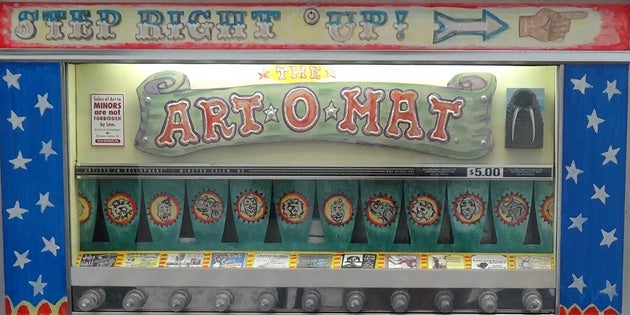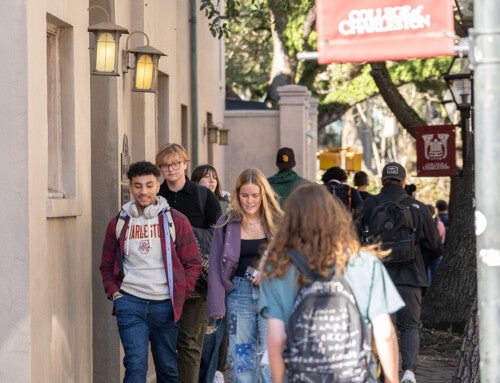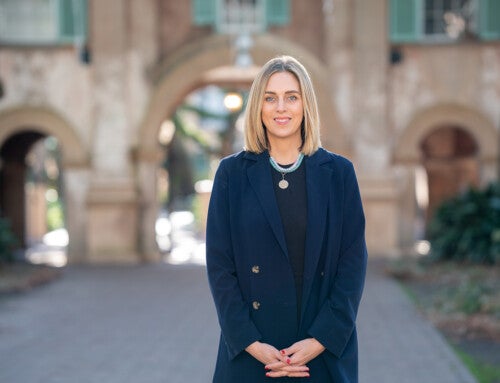For 14 years, the Art-o-mat in the College of Charleston’s School of the Arts has been drawing curious stares and delighting patrons with tiny, one-of-a-kind art collectibles.
Art-o-mat is a retrofitted cigarette vending machine that dispenses limited-edition artwork made by artists around the world. The College’s machine, located in the lobby of the Halsey Institute of Contemporary Art, is one of about 120 machines in the U.S. and abroad.
Until recently, the College had the only Art-o-mat in South Carolina. Rarebit, a new restaurant on upper King Street, now has the second machine.
The creator of Art-o-mat is Clark Whittington, an artist from Winston-Salem, N.C., who made the first machine for his own solo art show in 1997.
Lizz Biswell, curator of education and public programs at the Halsey, first became acquainted with the machine in 2008 as an undergraduate art history major at the College. “I remember thinking what is that thing? I’ve been buying things out of it ever since then. The unique little pieces of art are great for gifts,” she says.
The pieces are created by artists all over the world who apply to have their art sold in Art-o-mat machines. The art takes various forms – everything from paintings and prints and photographs mounted on blocks of wood to whimsical key chains, rolled-up paintings of fish, and painted domino pendants.
See some of the artwork available in Art-o-mat machines.
Biswell’s favorite pieces are from a series called Bad Boy Pincushions. Made by artist Alyssa Salomon of Providence Forge, Va., the pincushions feature images of famous or infamous world figures such as Russian President Vladimir Putin and former Venezuelan President Hugo Chavez.
The current Art-o-mat is actually the College’s second machine. The first one was located on the second floor of the Simons Center for the Arts. It accepted only Sacagawea dollars, which patrons could purchase on site. The original machine was later moved to the Halsey, and in 2012, it was switched out with a newer Art-o-mat that accepts regular dollar bills. Each piece of art costs $5.
The machine is popular at receptions held in the gallery. It’s a curiosity and conversation piece. For some, it’s a tradition to buy new pieces each time they visit campus. Biswell tells the story of one mother who began buying the art for her children when they were very young. Now older, the children return to the Art-o-mat every year to buy new items, still excited by the anticipation of unwrapping a surprise.






